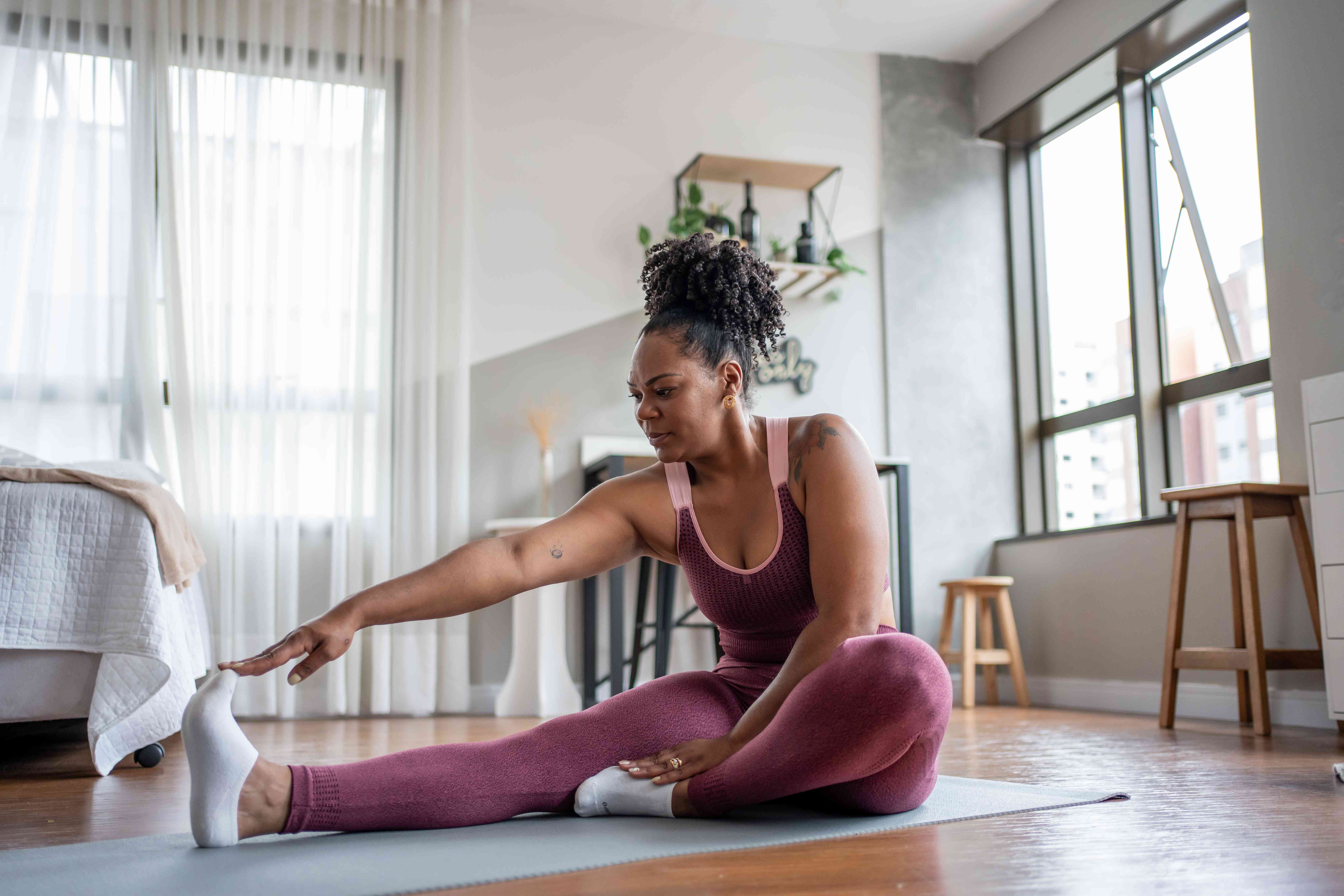Study: Your Flexibility May Say A Lot About Your Longevity The research doesn't prove causation but suggests that having better range of motion may be a key metric of health. Here's what you need to know

A new study has linked flexibility with a longer lifespan
- A new study found that poorer flexibility was associated with increased likelihood of death in middle-aged adults.
- Though the study doesn't prove causation, experts say flexibility is a key metric of health that can have far-reaching effects.
- To enhance flexibility, experts recommend static and dynamic stretching.
Maintaining flexibility might not just stretch your muscles—it might stretch your years.
That’s according to an August 2024 study in the Scandinavian Journal of Medicine and Science in Sports, which revealed a strong association between physical flexibility and decreased mortality from natural causes (other than COVID-19) in middle-aged men and women.
The study defines “flexibility”—and uses it interchangeably with “mobility,” even though they have slightly different meanings—as how well joints move through a range of motion.
As an observational study, the findings can’t prove that flexibility is a surefire route to longevity, but lead study author Claudio Gil S. Araújo, MD, PhD, told Health that the research suggests that it’s possible. “For aerobic fitness, we already know that improving results will prolong survival,” said Araújo, a sports and exercise physician at the Exercise Medicine Clinic Clinimex in Rio de Janeiro. “Perhaps the same happens with flexibility.”
Here’s a deeper look at the potential link between poor flexibility and increased risk of death—plus, how you can get more limber for better health.

Drs Producoes / Getty Images
The Connection Between Flexibility and Longevity
According to Araújo, flexibility has long been identified as a measure of physical fitness but hasn’t necessarily been explored as an indicator of longevity. “I realized that flexibility was not only an issue for sports performance but also for health,” he said.
To test how flexibility might affect how long people live, Araújo and his research team compiled data about 3,139 people aged 46 to 65. Then, they scored participants based on their performance in an assessment Araújo developed in the 1970s called the Flexitest, which he has used as part of his patient treatment protocol since 1994.
The test assesses the flexibility of seven different joints using 20 movements, such as extension and flexion of the knee, hip, trunk, wrist, and shoulder. For each movement, subjects were rated on a scale from 0 to 4, providing a total score of 0 to 80.
The researchers compared the flexibility test results to the likelihood of death over an average of 13 follow-up years. During this time, there was a higher death rate among men (10%) than women (7%). Women had also demonstrated notably more flexibility than men, scoring 35% higher on the Flexitest.
Among both men and women, higher flexibility scores were associated with a lower likelihood of death from natural causes like cardiovascular disease and cancer.
Why Flexibility Might Affect Lifespan
Araújo stressed that the study didn’t investigate why people with greater limberness may live longer. “We need another research design for this,” he said. “We are currently studying this using data from individuals that have been re-evaluated.”
That said, some experts have theories about why having an optimal range of motion might promote a longer lifespan.
“Flexibility often reflects an individual’s overall physical fitness and health status,” Reuben Chen, MD, a board-certified physician specializing in sports medicine, pain management, and traditional Chinese medicine, told Health. “While inflexibility itself might not be a direct cause of mortality, it can serve as an indicator of broader health issues such as chronic conditions, sedentary lifestyle, inflammation and pain, and psychosocial factors.”
Chen pointed out that greater flexibility can help prevent injury and make it easier for people to move in ways essential for healthy everyday living. Performing routine movements like climbing stairs or picking objects up off the floor improves joint flexibility and reduces the risk of degenerative joint disease, he said.
How to Assess and Improve Flexibility
While Araújo and his colleagues used the 20-movement Flexitest to assess subjects’ flexibility, there are other, simpler ways to take stock of your ability to move and stretch.
According to Chen, the following assessments can help you measure your flexibility:
- Sit and reach test: Sit on the floor with your legs stretched out in front of you and reach towards your toes, keeping your knees straight. The further you can go, the more flexible your lower hamstrings.
- Apley’s scratch test: Reach one arm over your shoulder and touch the opposite side of your back while reaching the other arm behind your back to feel your fingers. If your fingers can touch, it indicates good shoulder joint flexibility.
- Thomas test: Lie on your back at the end of a bench or table and pull one knee towards your chest, with the other leg hanging off the edge. A flat hanging leg rather than flexing at the hip demonstrates hip flexibility.
If you want to increase or maintain flexibility, there are exercises for that, too. Chen recommends static or dynamic stretching.
“Static stretching involves holding a stretch for 15 to 60 seconds without bouncing, allowing the muscle to relax and lengthen,” he said. Examples include poses like a seated butterfly stretch, ear-to-shoulder neck stretch, or downward-facing dog.
Dynamic stretches, on the other hand, involve controlled movements that take you to your range of motion limit, Chen said. Rather than stretching and holding, these include movements such as arm circles, twisting lunges, or squats.
Not sure where to begin? Consider yoga. “Yoga incorporates both static and dynamic stretching and is a good way to develop improved joint range of motion, along with core strengthening,” Chen said.
This story originally appeared on: Health News - Author:Sarah Garone

















